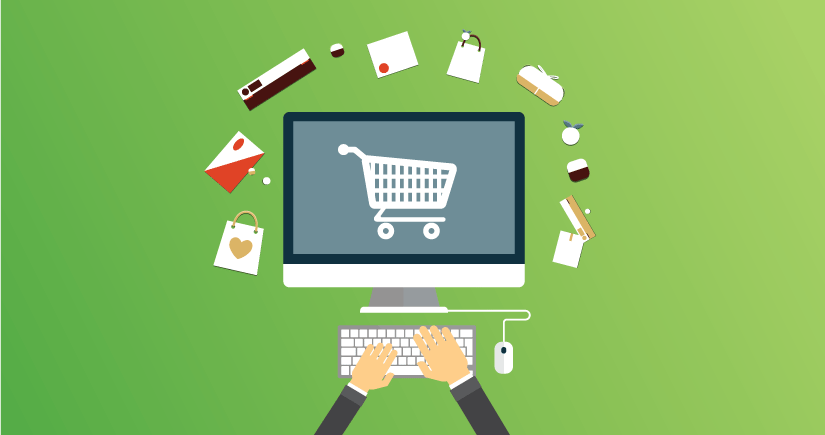Online shopping and e-commerce are a huge multi-billion dollar industry.
It will only continue to grow.
These online shopping stats will surprise you:
- 71% of shoppers believe they will get a better deal online than in stores
- 80% of the online population has purchased something using the internet
- 36% of consumers spend 30+ minutes comparison shopping before making a decision on purchasing a commodity product; 65% spend 16+ minutes doing so
People are shopping online.
Shopping online prevents impulse buying as it gives them enough time to compare, evaluate and mull over the offer before paying.
Over the past few years, I’ve been buying more stuff online.
It’s 99% more convenient.
I don’t have to carry anything as the product will be shipped to my doorstep.
The web has made shopping easier, better and more convenient.
If you have an e-commerce business, you’re definitely on the right path.
E-commerce is booming.
The question is, are you really taking advantage of it?
For most e-commerce business owners, the answer is no!
Many e-commerce entrepreneurs are marketing their businesses the wrong way.
What’s the wrong way many entrepreneurs could be marketing their businesses?
They are building their brand on a single selling channel.
Amazon. eBay. Or, even Etsy.
There’s nothing wrong with these platforms.
They are good, of course.
One guy reported making $75,762.35 in his first month selling on Amazon.
Chris Guthrie did $12,987.81 on Amazon 68 days with no pre-existing platform to leverage.
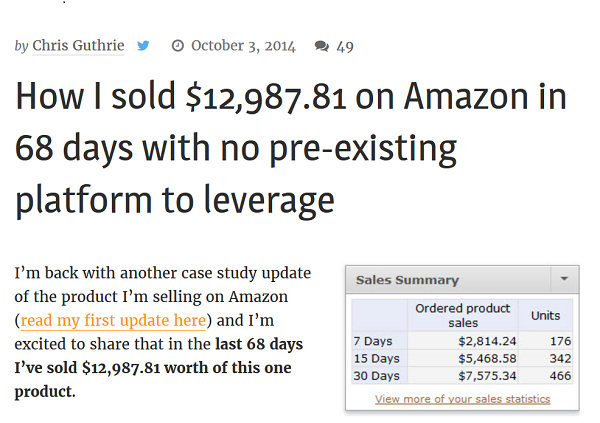
Amazon marketplace offers tremendous opportunities to e-commerce business owners.
Etsy is another platform that has made many successful e-commerce businesses.
But there’s a BIG problem with these platforms:
They own the customers. They make the rules.
Putting all your eggs in their baskets is very risky to the future of the business.
They can knock you out of their platform at any moment.
The future is uncertain.
The other case is that their marketplace could lose to a major competitor you don’t see coming.
For example, when Facebook usurped Myspace as the leading social platform, many businesses went down with it. That’s just an example.
You should embrace what is called multichannel retailing.
What is Multichannel Retailing?
Pre-internet, “multichannel retailing” simply meant retailers use multiple selling channels (such as print catalogs, direct mail, and phone calls) to reach customers.
Now, the term has expanded to include social media, marketplaces such as eBay and Amazon, and Comparison Shopping Engines (CSEs) such as Google Shopping.
A December 2014 SAP multi-country survey found that 74% of businesses increased sales with a multichannel strategy.
64% increased consumer loyalty/acquisition, and 57% reported better customer experience.
Apple is one of the top brands that uses multichannel retailing.
It’s no coincidence that the company is the world’s most valuable brand.
Apple’s marketing plays a crucial role in the achievements of the company.
Apple’s multichannel retail strategy unifies the customer experience across all channels and platforms, to create a complete end-to-end journey for each purchase.
This even includes the product packaging which helps achieve the overall style of familiarity.
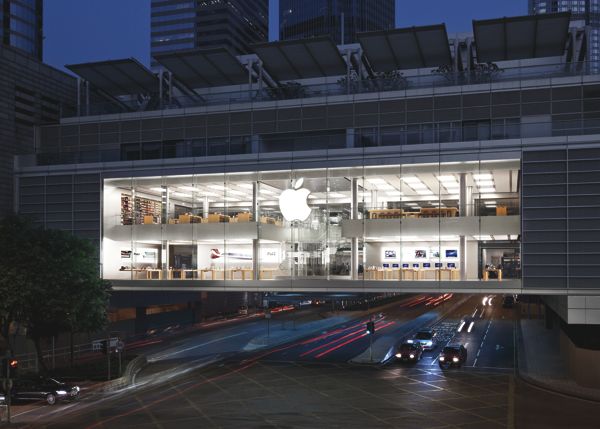
One of the best examples of brands in Asia that have achieved success in multichannel retailing is Burberry.
Its social media platforms go beyond Facebook, Twitter and Instagram and include China’s WeChat and Japan’s Line.
It has incorporated both of these popular Asian messaging apps into live-streaming and real-time engagement with its fans. This video shows how the brand used WeChat to engage consumers for a live Burberry event in Shanghai.
In other markets, Burberry has experimented with Snapchat and Periscope for real-time engagement.
The brand’s success with multichannel strategies in China and Japan, however, are now being used as models in other markets.
Your Customers Are Everywhere. Are You?
In today’s digitized world, your customers are everywhere, every minute of the day.
Gone are the days where they’ll always call someone directly to find an answer.
They will check you on Twitter, Facebook, Instagram, search your website and shoot you an email.
They are in every corner of the web.
Are you everywhere on the web?
If you are not, you are missing out, big time.
To drive sales in large numbers and grow your company, you can’t do that on a single channel.
If your e-commerce store is only set-up to run on Amazon, then you don’t have a business yet.
Again, I’ll like to emphasize that it’s not that Amazon is a bad marketplace.
It’s just that being there limits your business.
When you adopt the multichannel selling strategy, prospects and buyers can discuss their problems directly with you (or your customer department).
For example, your website will have a live chat option where customers can start discussions with you.
It can be texting or email.
They will also be able to contact you through a website form or social media.
I’m a big fan of live chat because it works.
For example, Dollar Shave Club offers a live chat option on their site:
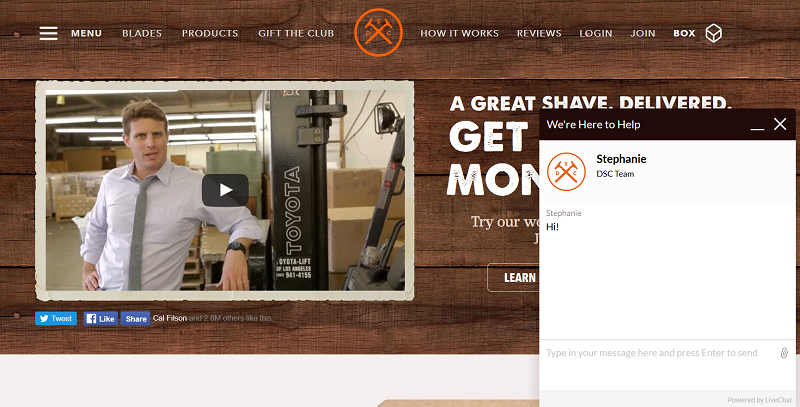
Customers can quickly get in touch with you right there on their device while doing something else at the same time.
Customers expectations are high these days. They want more than average service.
You can’t provide an out-of-box customer service experience on Amazon.
The Key To Outsmart Competitors On Amazon
Amazon is the biggest online marketplace which is why it’s getting a lot of mention here.
You can buy almost any product on the platform. Just anything you can get from a store.
To outsmart your competitors on Amazon, you shouldn’t compete with them on the platform.
Many sellers try to compete on Amazon by making sure their content optimized, customer service is faultless, and keywords are on point.
Diversification is the key to competing on Amazon.
You should build your brand outside Amazon.
By building your store mainly on Amazon, you make it easier for others to compete with you.
But by building your brand elsewhere, you can become unstoppable.
Because the sales you’re getting is coming outside of the platform, your store will be much better and competitors will find it difficult to challenge you.
Put The Future Of Your Business In Your Hands
It’s very important to own and control your future.
An Amazon ban or algorithm change won’t affect your business’s future when it’s in your hands.
For example, when Google introduced the Panda and Penguin algorithm updates, many businesses that completely relied on Google, and who were affected by the updates lost their businesses.
Many of these businesses never recovered from the penalties inflicted by these updates.
And those who did recovered never reach the point there are before the updates.
I’m not talking only about Amazon here.
Your e-commerce store should never heavily rely on any single channel.
If 40% of your sales are coming from one channel, then it’s risky.
Beating it down to 30% makes sense.
20% is better if you can achieve that.
There are many marketing channels today.
You should take advantage of them all to safeguard the future of your business.
You should spread your risk across these platforms:
YouTube. Facebook. Twitter. Instagram. Snapchat. Pinterest. Email. Organic search engines. AdWords. Etc.
The more they are, the better.
The Best Place To Start Your E-commerce Store
The best place to sell your product depends on the product you sell. For example, if running a yacht charter company, Amazon is definitely not the place to start.
You have to take your vertical, audience, advantages, and experience into account.
Amazon is a good place to start selling. But you’ll also need to take advantage of other platforms too.
If you’re already selling on Amazon, it proves there’s a market for your product.
The best place to start selling is your website.
You have 100% control and freedom on your website.
You’ll learn how to ship, and handle fulfillment, and do all of the other things you should do as a retailer. The knowledge you get there is invaluable.
Making your website the home of your e-commerce business allows you to market on Facebook, Google Shopping, Pinterest, Instagram, and others.
Establishing an e-commerce website first lets you brand your product. That increases its marketability.
Therefore, consumers won’t see it as another product on Amazon.
You own customers’ data when you sell through your website.
You can always reach out to them to promote new offers – more money of course.
Take Full Advantage Of Google Shopping
Once known as Google Product Search.
And way before that known also as Froogle (which in terms of puns isn’t the most fitting, surely nobody involved wants you to be economical with your cash).
Now simply Google Shopping, this is a service that lets consumers search for products and compare prices through Google Search.
You can find Shopping within Google Ads, here you’ll be creating Product Listing Ads (PLA) featuring relevant details, rich images, product prices and your store name.
It’s worth noting here that Google only charges you when a searcher clicks-through on your ad to your store.
To start a campaign you need two things:
- An AdWords account
- A Merchant Centre account
If you’re a stranger to AdWords, it’s very simple to set-up especially if you already have a Google sign-in.
Google Shopping helps shoppers find your product at the time that they need it.
By tapping into the growing number of online searchers, Google Shopping exposes your products to more potential buyers.
By matching specific search queries to your relevant product offer, Google Shopping gives you more control over where your ads appear and increases your level of high-quality website traffic.
Your Target Customers Are On Social Media
Today, social media spending makes up a small fraction of most business’ marketing budgets.
A recent Duke University survey found that, on average, social media spending accounted for just 9% of the overall budget. But that number is projected to expand to nearly 22% in the next five years.
Clearly, e-commerce marketers recognize the power of social media to connect with an audience.
Facebook, Twitter, LinkedIn, and Instagram are nearly ubiquitous in our lives.
They’re like the 21st-Century Main Street.
We use them to communicate, find information quickly, and increasingly, to shop for products.
Social media is very effective for customer service.
Customers want information, and they want it now.
Social media enables businesses to quickly respond to customer inquiries.
They also make it easier to spot and respond to unpleasant customer experiences.
Develop a strategy for responding to customer inquiries via social media.
Here’s how Walmart is using Facebook for customer service.
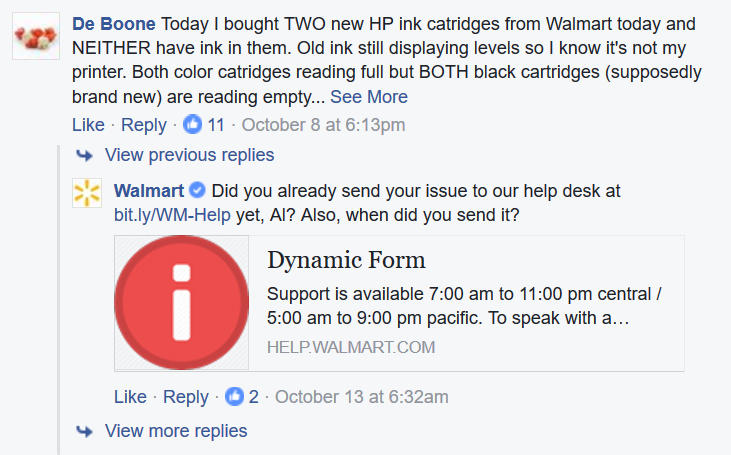
Social media is also good for customer acquisition.
Your social profile is really your storefront.
Customers are now using social networks to research companies and products.
Your Yelp, Facebook, LinkedIn and other social pages provide the perfect opportunity to make a lasting impression.
Start by optimizing your profiles and making important information easy-to-find.
Also, encourage your existing customers to review your company on Facebook, Google, or Yelp.
Test Each Marketing Channel
AdWords was a gold rush when Google released it.
These days, AdWords is still effective but expensive.
Prices for keywords have jumped through the roofs because there is more competition.
For example, each click on keywords like “insurance agent” and “insurance broker” are worth $14.79 and $20 respectively. So, for an insurance agency spending that much per click on Google Ads, they have to ensure that they are making more than their advertising costs and others expenses.
The same thing happened with Facebook ads.
It was a great channel back when it was released. And it’s still is but not like before because it’s so saturated.
They are always new marketing channels coming out.
You should find those channels when they are new and test the hell out of them.
If a marketing channel gives you a high return on your investment, make sure you double down on it.
Very soon, the channel will be saturated and it won’t be effective as it used to be.
Smart marketers are always looking for new channels to test.
But that doesn’t mean old channels like Facebook ads, AdWords and SEO are less effective.
They still work very well across most niches. But you have to make sure they are giving you a worthwhile ROI for you to continue using them.
I keep up with industry blogs to know the latest marketing channel and smart tactic marketers are using.
When I see a new thing, I try to use it for myself and see how it works. You should be doing the same thing for your e-commerce store.
Another simple way to discover new channels is to spy on your competitors.
From Spyfu to SEMrush to What Runs Where, the possibilities are endless. All of those tools will show you what your competitors are up to.
In addition to using the tools above, you should continually be monitoring what your competitors are doing.
The simple way to do that is to visit their sites, go through their conversion funnel and see what they are doing and how they are doing it.
That makes you smart.
And that also gives you an edge in your industry.
If you are marketing through a single channel, you wouldn’t have the opportunity to take advantage of emerging marketing channels before your competitors do.
That is why you should stop relying on a single channel like Amazon to sell your product.
Create a website for your business and start selling today.
Related articles: content marketing mistakes, e-commerce marketing mistake, marketing mistakes, awful content marketing mistakes
